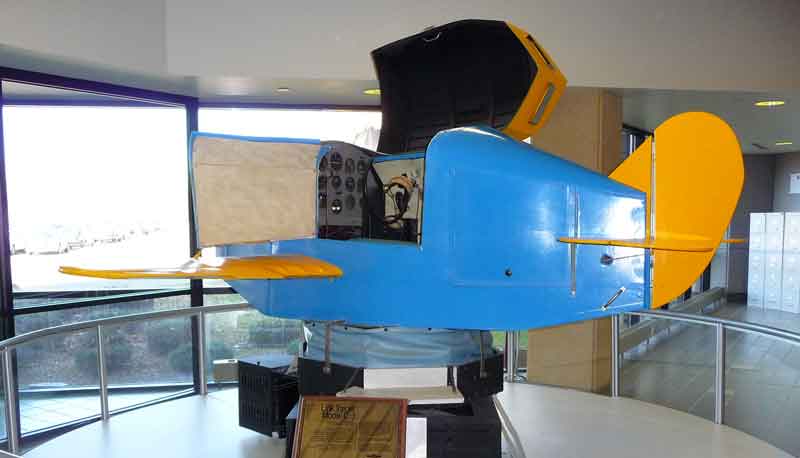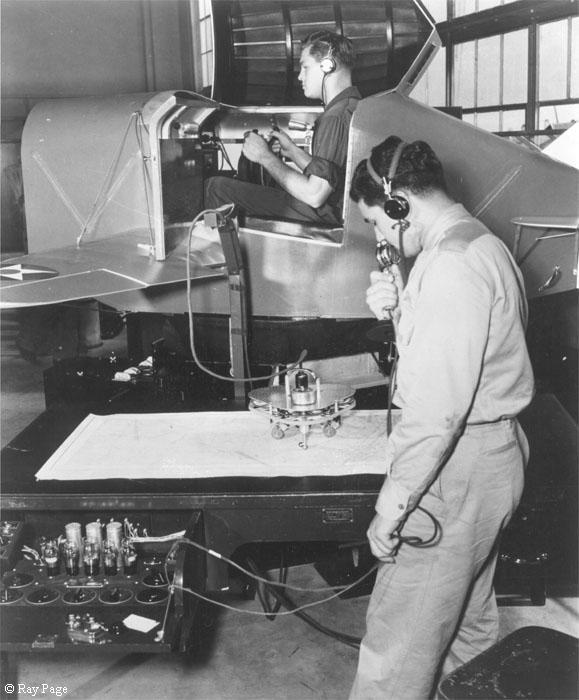What We Can Learn from the Link Flight Trainer for Simulation
Executive Summary
- What was the link trainer, and how did it work?
- What are the differences between flight simulation and supply chain planning simulation?

A picture of the Link Trainer.
Introduction to the Link Trainer
The Link Trainer was developed back in 1929, although it developed through several incarnations, which eventually included instrumentation and a course plotter. However, the story of how the Link Trainer was finally accepted is explained in the quote below:
“Link’s first military sales came as a result of the Air Mail scandal, when the Army Air Corps took over carriage of U.S. Air Mail. Twelve pilots were killed in a 78 day period due to their unfamiliarity with Instrument Flying Conditions. The large scale loss of life prompted the Air Corps to look at a number of solutions, including Link’s pilot trainer. The Air Corps was given a stark demonstration of the potential of instrument training when, in 1934, Link flew in to a meeting in conditions of fog that the Air Corps evaluation team regarded as unflyable.[5] As a result, the Air Corps ordered the first six pilot trainers at $3,500 each.” – Wikipedia
The fatalities were no doubt due to the following:
“Only 48 of those selected had logged at least 25 hours of flight time in bad weather, only 31 had 50 hours or more of night flying, and only 2 had 50 hours of instrument time.” – Wikipedia
Desperation always increases the acceptance of unusual ideas. For instance, the Nazi super-weapons were driven by the fact that the Germans knew they were not going to win the war with conventional means. The Air Corps eventually got out of the business of delivering airmail. But the Link Trainer had already proven itself and was soon to become a popular purchase for aviation globally.
How the Link Trainer Worked
The Link Trainer has several components, the primary flight capsule being the most prominent component. However, I learned from visiting the Cavanaugh Flight Museum in Addison, Texas, that there was also a table at which the flight engineer would work and plot the plane’s ideal location using a course plotter.

The flight engineer, who was sitting at the table, could see the same instruments the pilot inside the capsule could see. The trainer would speak to the trainee through a microphone. No doubt, the flight engineer graded the trainee.
“By relating the position of the student’s aircraft to marks on the chart, the instructor was able to manually control the transmission of simulated radio beacon signals to the trainer.” – Kevin Moore
The best way to figure out exactly how the Link Trainer worked would be to find an old manual, which still exists. I found one from a listing on eBay. It would be nice if the manual were saved as a PDF document online. If the manual is not eventually digitized, it is most likely to disappear at some point, which is unfortunate as this is a historically valuable document.
Although there is a description of its operation from an author who read the patent.
“Rougerie’s patent of 1928 describes a simple trainer, fixed to the ground, consisting of a students seat facing an instrument panel and two sets of controls, one each for the student and instructor. The student’s flight instruments are directly connected to the instructor’s controls. The student, then, flies the trainer in response to commands from the instructor, who in turn modifies the instrument indications according to the students actions – the accuracy of the simulation depends entirely on the instructor.” – Kevin Moore
The type of simulation the Link Trainer provided was the understanding and ability to fly from only instruments. This type of training can be performed in an airplane, but it requires that the trained pilot have their vision impaired in some way and that the training pilot takes control when the trainee invariably makes errors that put the plane in danger. Instrumentation flying is the perfect form of flight simulation to train in a simulator. Furthermore, the cost of running a flight simulator like this is minuscule compared to using a real plane.
Since the link, flight simulation has become extremely sophisticated, as the Boeing flight simulator shown below demonstrates.
Modern simulators are so realistic, and they should be experienced with video to understand how good a job in providing an immersive experience. Below is a video of the 787 simulators, the outside of which can be seen above.
The Differences Between Flight Simulation and Supply Chain Planning Simulation
In terms of the lessons for supply chain simulation, not only is supply chain software by business software simulation considerably lags the simulation in flight training. There is much less simulation performed in the supply chain than could or should be. Air transportation and air warfare have higher stakes than supply chain planning. Therefore, it is not at all surprising that simulation was adopted earliest for training pilots. When we speak of simulation in supply chain planning, it typically refers to changes made to master data applied to models. A supply chain procedure is run, and the results are checked to see if the master data change (say reduce lead times) should be made permanent. Most supply chain simulation environments end up being hijacked to test narrow technology adjustments which attempt to fix issues. That is, the IT department jealously guards the simulation environment to meet their needs. In terms of simulation for the users of the system, this is very rarely done. Users in supply chain planning could undoubtedly benefit from a system to work test with, but they are never provided one in the vast majority of cases.
Conclusion
The Link Trainer was a groundbreaking device. It had some experienced pilots who questioned whether a device like this could train pilots. However, it proved that it could. The Link Trainer is the precursor to the many increasingly sophisticated flight simulators used since the Link and to the present day. Since the Link flight simulation has been a major area of study and product sales. Interestingly, several aircraft accidents where the pilot lost orientation have been blamed on the high degree of modern aircraft computerization. Some pilots have lost the training to fly based upon instruments alone. This demonstrates the importance of training in multiple aspects of flight skills.
References
https://www.cavanaughflightmuseum.com/
https://en.wikipedia.org/wiki/Link_Trainer
https://en.wikipedia.org/wiki/Instrument_time
https://www.goflightinc.com/flightsimhistory.shtml